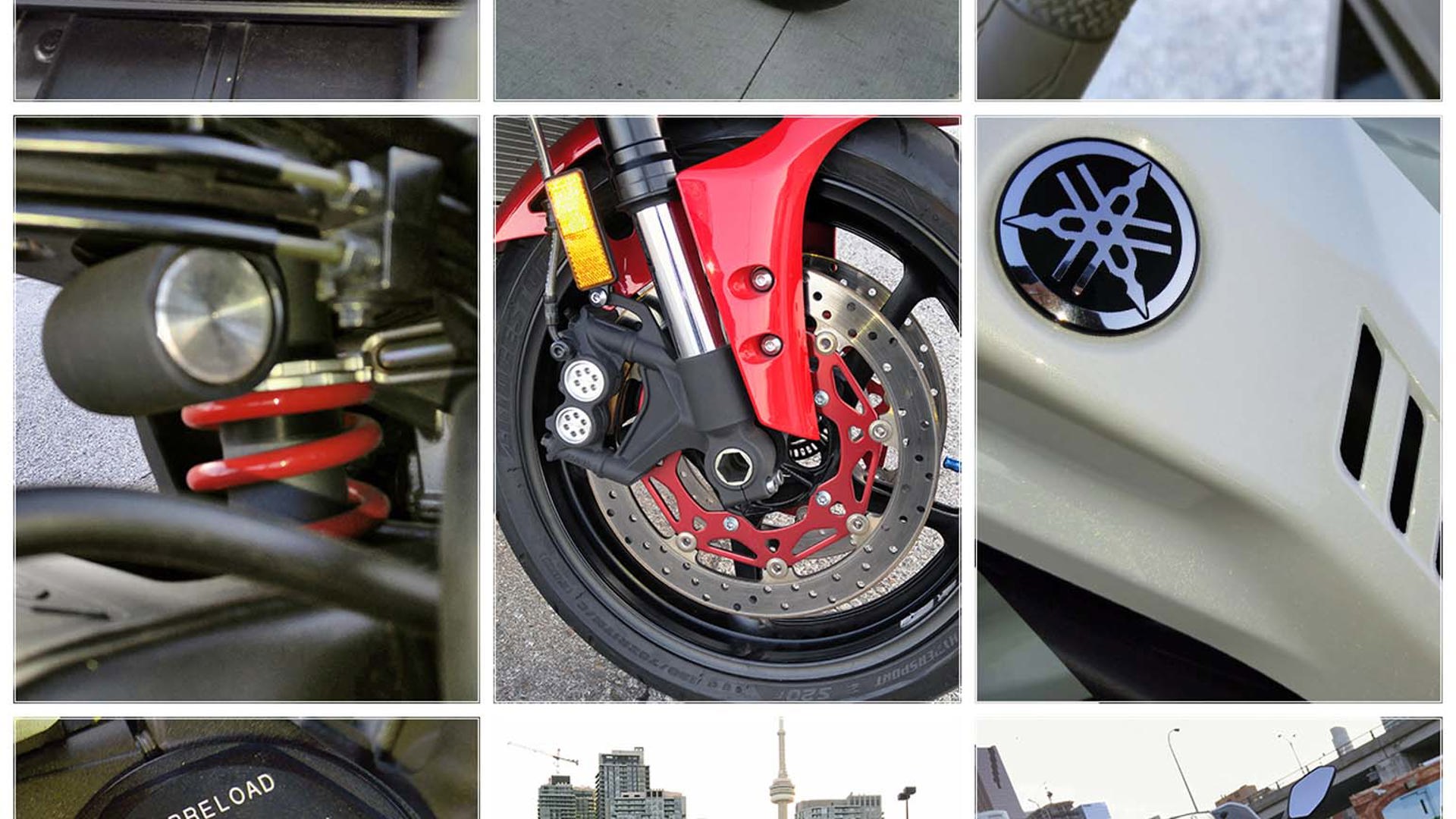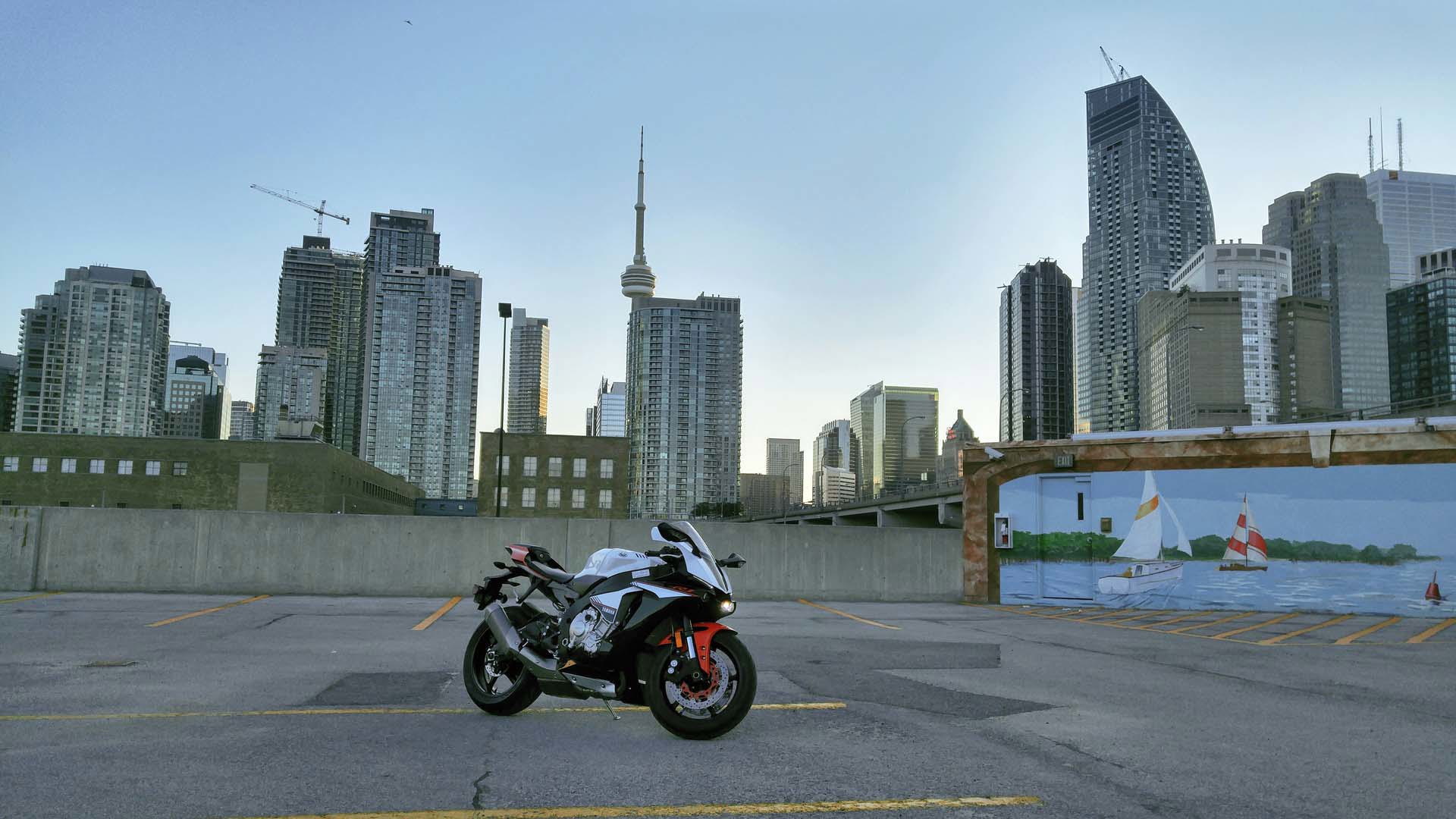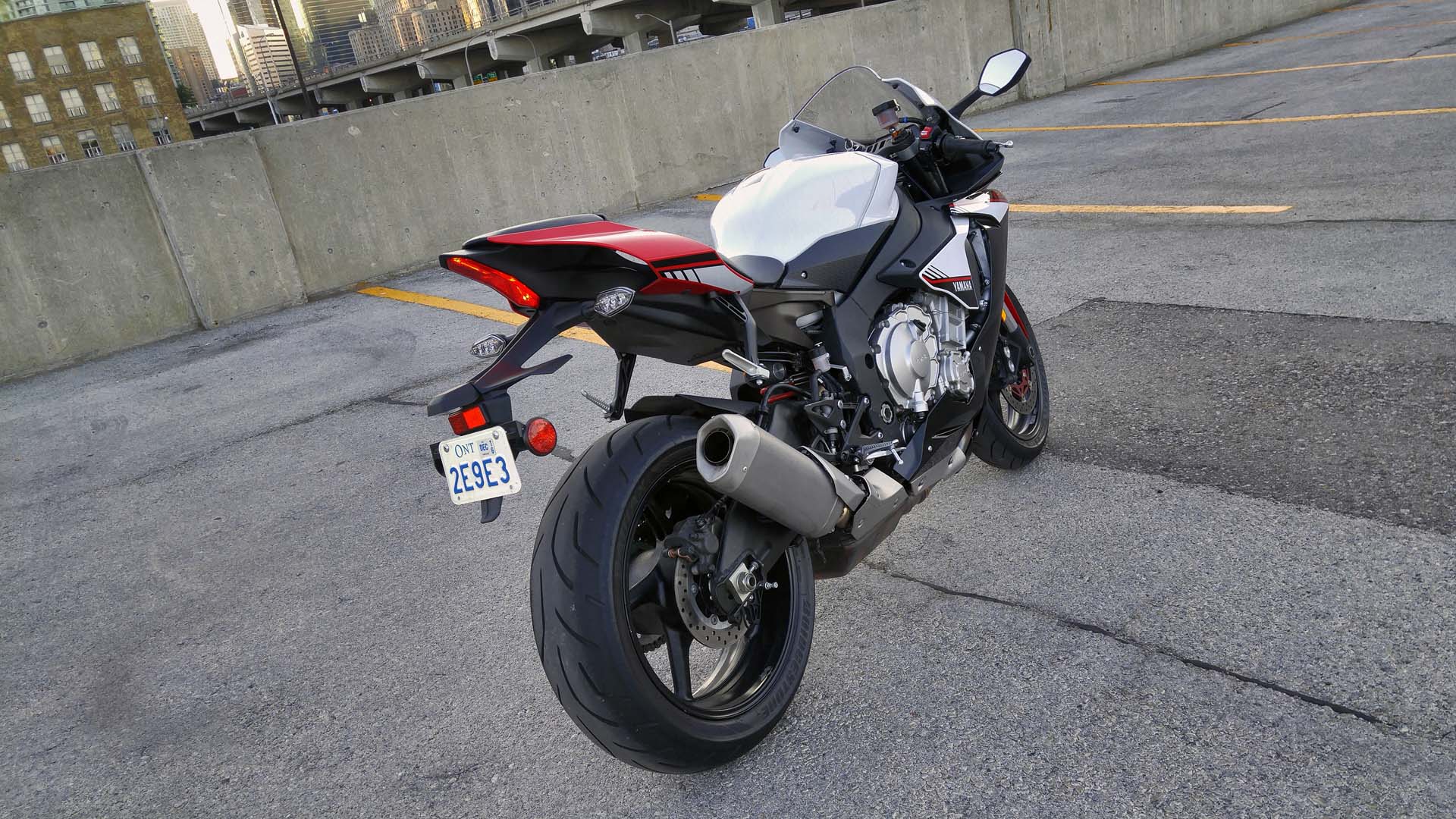I think the tachometer is mocking me. Whenever the revs climb past the 6,000 mark the bar-graph readout switches from a dull black to a vivid green. It’s as if the tach is saying, “THIS is good!” and then when I shift gears, “This is lame!”
It’s really not my fault, Mr. Tachometer. I promise. It’s just that unless I ride around in first or second, using the “green” part of the rev range is liable to make that policeman over there grumpy with me. In fact, even if I do, it probably will draw a raised eyebrow at least!
And this is Yamaha's "street-focused" R1!
The 2016 Yamaha YZF-R1S is arguably the better R1 for the street. With a slightly heavier crank and some other more toned-down components – heavier wheels, swing-arm and more – you might think the R1S is a gentler, more composed cousin to the wild YZF-R1 I reviewed last year.
Except it is not.

Despite the nods to cost-effectiveness and durability the R1S remains a weapon of monumental license-destroying capability.
This engine leaves out the titanium conrods and adds in more conventional (and cheaper) steel ones and therefore has a lower redline – 12,000 rpm instead of 14,000.
There are a handful of exhaust and engine cover components now made from aluminum or steel instead of magnesium or titanium too – like the exhaust headers: titanium on R1 and R1M, stainless steel here.
And yet, the overall weight increase is allegedly only four kilograms for a total of 203 kg.

At this point, the jump from $16,699 for this to the $18,999 2016 Yamaha YZF-R1 begins to look enticing. You get better tires, less unsprung weight, a more impressive redline (for bench racing) and a standard quickshifter all for $2,300.
Except, that quickshifter is available as a $260 option on the R1S and once your wear out the first set of tires, the price difference between these standard issue units and the next set is between $100 and $200.
I would still, however, buy the regular R1 over the R1S.
Sure, both bikes make similar horsepower and torque until the very upper echelons of the rev range, and sure, the chassis geometry and suspension are the same. There are even the same six-axis sensors that power Yamaha’s uber-advanced traction control, slide control, wheelie control and toast-making systems.

But somehow this bike doesn’t gel as well as the other. The heavier wheels are probably a large part of that. These five-spoke aluminum wheels replace the magnesium wheels of the regular R1 as part of this bike’s cost reduction moves but also to offer some more durability for daily street riders.
Part of it is also the less grippy tires which are designed for more tread life than traction. The result is tangible especially in the tighter, twistier stuff but will impress those looking for a little mileage from their rubber.
Really it comes down to budget and ego. If you can stand not being on the “proper” R1 and want to save yourself a couple grand there is very little reason not to buy this version of R1. And even if you do buy the regular R1, you’re still not getting the biggest, baddest puppy in the litter – that honour goes to the R1M.
What this offering also does is bring the R1 down under the price of a Kawasaki ZX-10R and within $100 of the Honda CBR1000RR – though it won’t get you close to the run-out $14,999 pricing currently available on the outgoing Suzuki GSX-R1000.
The injection of the R1 deep into the pricing territory of those competitors is substantial though.
Of the Japanese big-four litre bikes this is the most advanced one on the market – and that’s something worth considering.



























